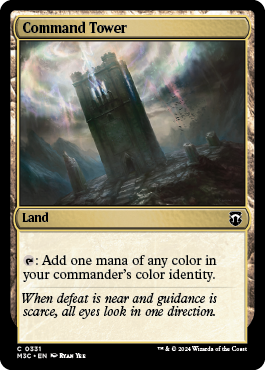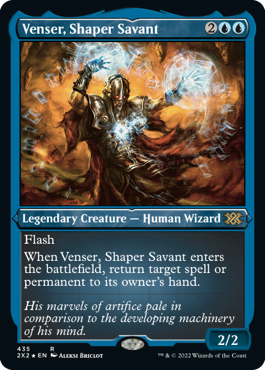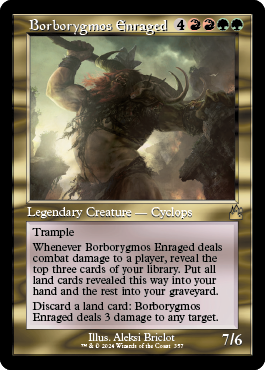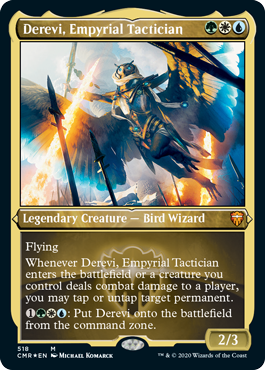Hello friends, and welcome to Commander Week!
As we look towards Journey into Nyx, I thought it would be fun to spend a while talking about one of the most popular casual formats, Commander!

One of the central features of Commander is, of course, the commanders themselves. When constructing a Commander deck, you pick one legendary creature to be your deck’s “commander” or “general.” You then pick 99 additional cards (including lands) to form the rest of your deck. Each of those cards has to fall within your commander’s color identity, which includes the colors of the mana symbols in that creature’s mana cost, as well as any mana symbols that occur in its text box or color indicator. (So, for example,
Memnarch‘s color identity is blue.) Colorless cards are also okay. Additionally, Commander is a singleton format — so, with the exception of basic lands, you can’t have more than one copy of a card in your deck, which makes for some interesting deckbuilding decisions!
When you start the game, the 99 cards in your deck become your library for this format. You then set your commander itself aside, in a special zone called the command zone. This zone functions similarly to the exile zone — anything in the command zone isn’t on the battlefield, for example — except that it’s even harder to get things out of the command zone than out of exile! Only effects that specifically refer to the command zone can affect cards in the command zone.

However, the rules of the Commander format itself allow you to cast your commander from the command zone at any point you could cast that card. This means that you cast most commanders like regular creatures — during one of your main phases, when the stack is empty. But you can cast a commander with flash (like
Venser, Shaper Savant) at any time you could cast an instant, or use a card that changes when you can cast creatures, like
Prophet of Kruphix, to enable you to do the same thing.
If your commander would die, or be put into the graveyard for any reason, don’t worry! You can simply choose to move it back to the command zone. The same goes for if your commander is exiled (such as to Swords to Plowshares). These effects replace the destination of your commander entirely, so they never touch the graveyard or exile at all.

Once your commander has gone back to the command zone, you can cast it again! However, constantly casting your commander from the command zone can be a very cumbersome challenge (try saying that five times fast). Every time you cast your commander from the command zone beyond the first, your commander’s cost is increased by {2}. As an example, say my commander is
Borborygmos Enraged. This friendly cyclops costs {4}{R}{R}{G}{G} the first time I cast him from the command zone, then {6}{R}{R}{G}{G} the second time, and then {8}{R}{R}{G}{G}, and so on. This is frequently called the “commander tax.”
The commander tax is considered part of the total cost of your commander, so the tax can be reduced by anything that reduces spell costs. Suppose that I have a bunch of effects that, in total, reduce the cost of green creatures I cast by {5}. I’ve cast Borborygmos from the command zone once already. To cast him a second time would normally cost a total of {6}{R}{R}{G}{G} as I explained above. However, the {5} mana reduction turns this into just {1}{R}{R}{G}{G} — eliminating the entire comnmander tax, as well as some of Borborygmos’ usual cost in generic mana.

Let’s say that, after I cast Borborygmos, my opponent
Unsummons him. Even though Borborygmos is leaving the battlefield, I can’t put him in the command zone — I can only do that when he’s moving specifically to exile or the graveyard. However, I
can can cast him from my hand! Even better, the commander tax only applies when I’m casting my commander from the command zone, so I can cast Borborygmos for just his regular cost of {4}{R}{R}{G}{G} (which could then be reduced by other effects).
As a final note, one card in the game, Derevi, Empyrial Tactician, has an ability that lets you put Derevi directly from the command zone onto the battlefield. Since this is an ability, not a spell, its not subject to the commander tax — you can use it over and over for the same cost of {1}{G}{W}{U}. That’s pretty powerful!
Today’s Commander Rules Tip Written by Paul Baranay
Sharing is Caring - Click Below to Share
